DODGSON, CHARLES LUTWIDGE ("Lewis Carroll"). Autograph double-sided drawing signed, consisting of ink drawings in nine panels, boldly inscribed at end: "For Mary Emma Watson from CLD [paraph]," n.p. [Guildford?], n.d. [1871]. 2 pages, folio, 333 x 207mm. (13 x 8 1/8 in.), in brown ink on good paper with "Britannia" watermark, minor soiling, unobtrusive fold tears, light foxing. LEWIS CARROLL'S RETELLING OF "THE THREE LITTLE PIGS" Mary Emma Watson (1861?-1928) to whom this unusual drawing is inscribed, was a daughter of George William Watson (1822-1863), sometime postmaster of Merton College, Oxford and Curate of Milford, Surrey. Carroll became acquainted with the Mary Emma and her two sisters, Georgina ("Ina") and Harriet ("Hartie"), while living in Guildford in 1869. "He made much of these three little girls, Harriet, Mary Emma and Ina, presenting them with copies of his books, making puzzles and stories for them. They first appear in Carroll's Diaries (p.284) on 5 October 1869, when Dodgson photographed them at Guildford. The developing relationship is described by the editor of Dodgson's letters, quoting from the Diaries : "I was very glad at last to get an opportunity of making acquaintance with them." Three days later he took a group photograph of "my new friends," and on the following day, after taking still more photographs, he brought them to his rooms at the Chestnuts and told them a story.... The friendship remained alive through the 1870s and 1880s and it certainly inspired some of Dodgson's most fanciful letters, verses and puzzles.... Dodgson addressed the three girls collectively as Harmarina, a portmanteau word created from parts of each of their first names" ( Letters, ed. Morton N. Cohen, 1979, p.141n). The nine drawings (six on the recto, three on the verso) are numbered at the top or top left-hand corner; the panels are outlined by ink lines drawn freehand. Late in life, Mary Emma Watson, who resided at St. Leonard's-on-Sea, allowed these drawings and several other Dodgson letters to be reproduced in Some Rare Carrolliana, with notes by Sidney Herbert Williams (London: privately published 1924). As Williams explained, "The nine drawings...are illustrations drawn by Lewis Carroll for a story told to the three Watson sisters one summer's day in 1871. This story was so impressed on Mary Watson's young mind that she was able to recall the incidents, and has told me this unwritten story, much as Lewis Carroll invented it for her and her sisters...From what Miss Mary Watson remembered of the story, it was an adaptation of the old fairy story of the Grimm brothers about the three little pigs and the wolf, Lewis Carroll substituting his three little friends for the pigs and a fox for the wolf. His drawings are obviously rough, but it will be readily seen by comparison with other drawings of Lewis Carroll such as those in Alice's Adventures Under Ground , that these are quite characteristic of the author-illustrator. There is a common likeness in the faces...." Williams prints Carroll's lengthy reworking of "The Three Little Pigs" in its entirety, as told to him by Mary Emma Watson ( ibid ., pp.12-20). The narrative begins: "'Well, then, this story is about three little girls living in a pretty old town on the banks of the River Wye with their mother, who spent all her time thinking about how she could make them happy. And they were happy, too, except that sometimes they were inclined to feel a little discontented. If you look at picture No.1, you will see what I mean: there the three children are evidently saying "What shall we do next?" and their mother is wondering how she can best amuse them. But, then, too much happiness, like too much cake, is apt to disagree with people -- big as well as little. They had a lovely time between lessons; there were excursions and picnics, and all sorts of doings, and the summer days used to slip away in a delightful manner.... "'Now among their fairy stories was one about t
DODGSON, CHARLES LUTWIDGE ("Lewis Carroll"). Autograph double-sided drawing signed, consisting of ink drawings in nine panels, boldly inscribed at end: "For Mary Emma Watson from CLD [paraph]," n.p. [Guildford?], n.d. [1871]. 2 pages, folio, 333 x 207mm. (13 x 8 1/8 in.), in brown ink on good paper with "Britannia" watermark, minor soiling, unobtrusive fold tears, light foxing. LEWIS CARROLL'S RETELLING OF "THE THREE LITTLE PIGS" Mary Emma Watson (1861?-1928) to whom this unusual drawing is inscribed, was a daughter of George William Watson (1822-1863), sometime postmaster of Merton College, Oxford and Curate of Milford, Surrey. Carroll became acquainted with the Mary Emma and her two sisters, Georgina ("Ina") and Harriet ("Hartie"), while living in Guildford in 1869. "He made much of these three little girls, Harriet, Mary Emma and Ina, presenting them with copies of his books, making puzzles and stories for them. They first appear in Carroll's Diaries (p.284) on 5 October 1869, when Dodgson photographed them at Guildford. The developing relationship is described by the editor of Dodgson's letters, quoting from the Diaries : "I was very glad at last to get an opportunity of making acquaintance with them." Three days later he took a group photograph of "my new friends," and on the following day, after taking still more photographs, he brought them to his rooms at the Chestnuts and told them a story.... The friendship remained alive through the 1870s and 1880s and it certainly inspired some of Dodgson's most fanciful letters, verses and puzzles.... Dodgson addressed the three girls collectively as Harmarina, a portmanteau word created from parts of each of their first names" ( Letters, ed. Morton N. Cohen, 1979, p.141n). The nine drawings (six on the recto, three on the verso) are numbered at the top or top left-hand corner; the panels are outlined by ink lines drawn freehand. Late in life, Mary Emma Watson, who resided at St. Leonard's-on-Sea, allowed these drawings and several other Dodgson letters to be reproduced in Some Rare Carrolliana, with notes by Sidney Herbert Williams (London: privately published 1924). As Williams explained, "The nine drawings...are illustrations drawn by Lewis Carroll for a story told to the three Watson sisters one summer's day in 1871. This story was so impressed on Mary Watson's young mind that she was able to recall the incidents, and has told me this unwritten story, much as Lewis Carroll invented it for her and her sisters...From what Miss Mary Watson remembered of the story, it was an adaptation of the old fairy story of the Grimm brothers about the three little pigs and the wolf, Lewis Carroll substituting his three little friends for the pigs and a fox for the wolf. His drawings are obviously rough, but it will be readily seen by comparison with other drawings of Lewis Carroll such as those in Alice's Adventures Under Ground , that these are quite characteristic of the author-illustrator. There is a common likeness in the faces...." Williams prints Carroll's lengthy reworking of "The Three Little Pigs" in its entirety, as told to him by Mary Emma Watson ( ibid ., pp.12-20). The narrative begins: "'Well, then, this story is about three little girls living in a pretty old town on the banks of the River Wye with their mother, who spent all her time thinking about how she could make them happy. And they were happy, too, except that sometimes they were inclined to feel a little discontented. If you look at picture No.1, you will see what I mean: there the three children are evidently saying "What shall we do next?" and their mother is wondering how she can best amuse them. But, then, too much happiness, like too much cake, is apt to disagree with people -- big as well as little. They had a lovely time between lessons; there were excursions and picnics, and all sorts of doings, and the summer days used to slip away in a delightful manner.... "'Now among their fairy stories was one about t


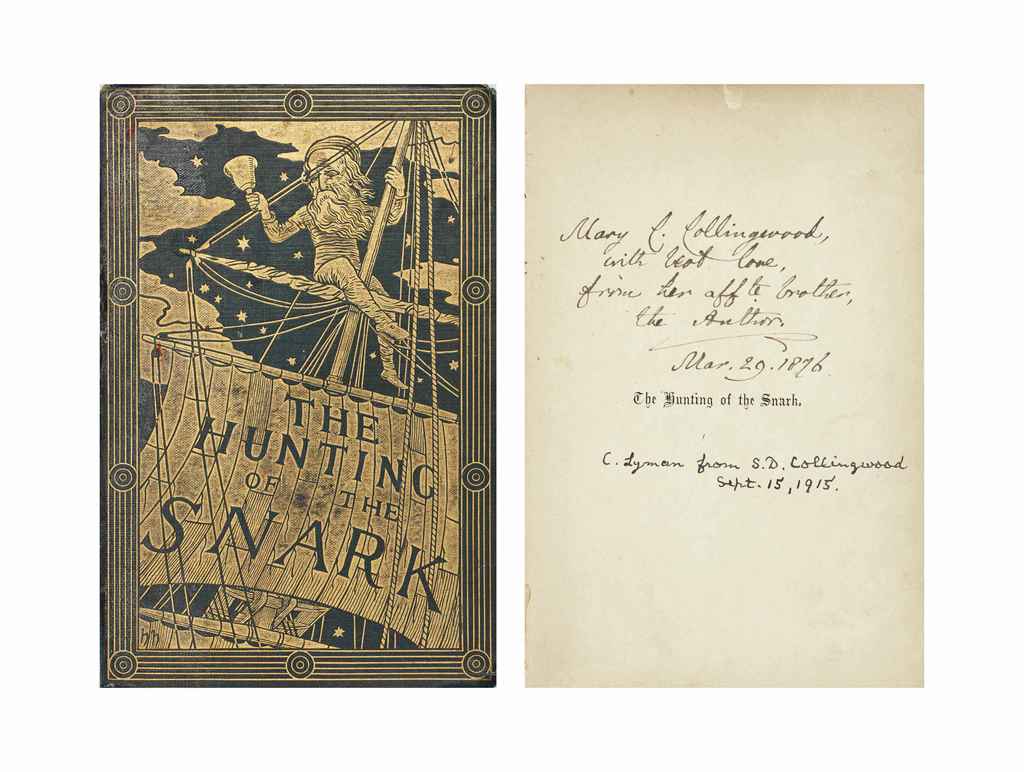


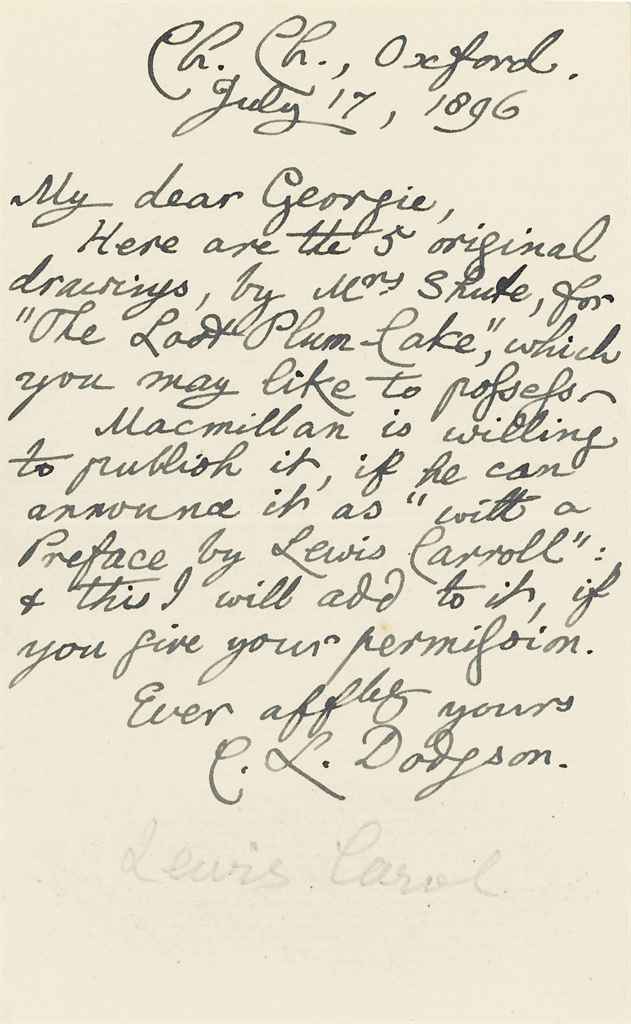
.jpg)
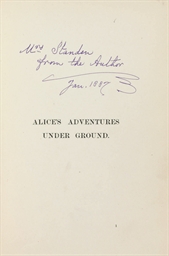

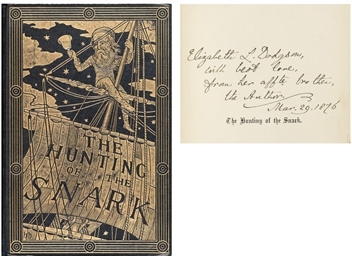
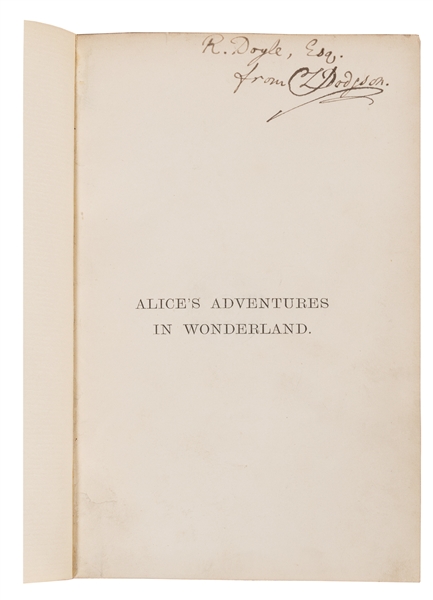
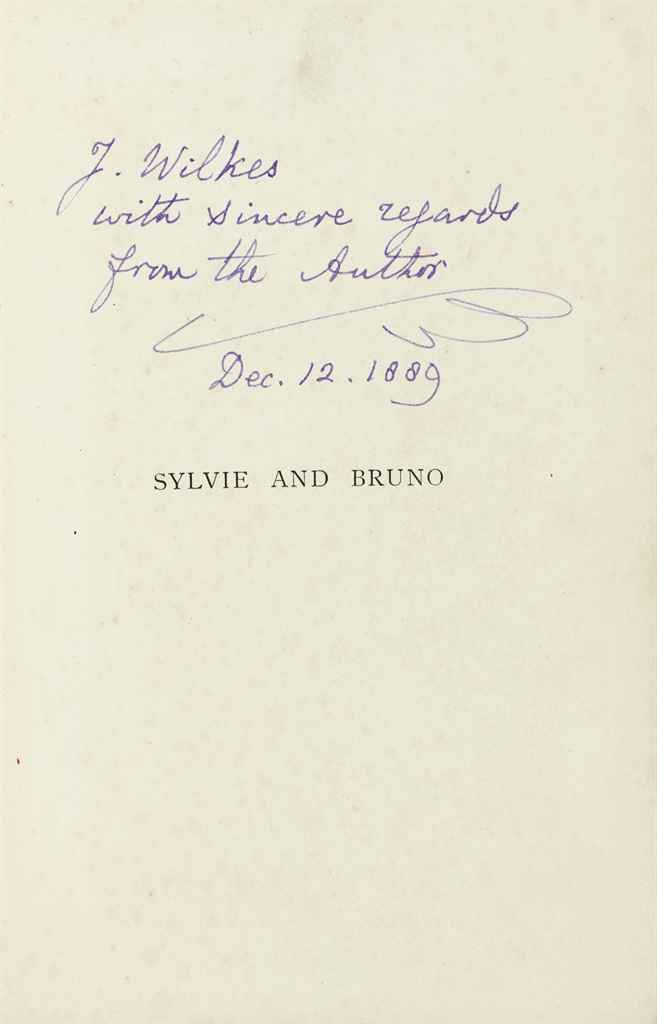


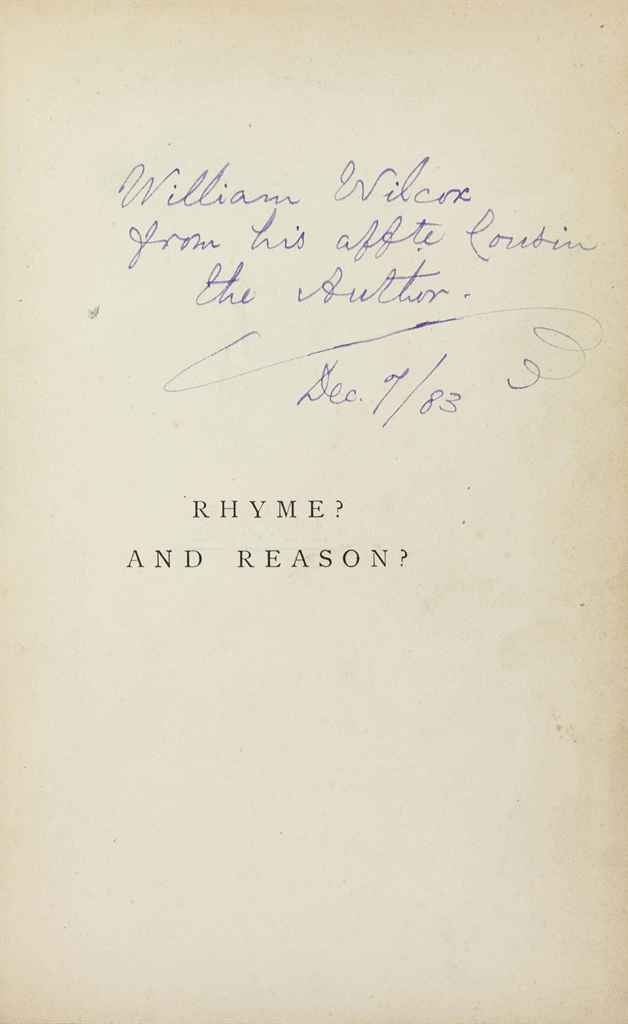
Testen Sie LotSearch und seine Premium-Features 7 Tage - ohne Kosten!
Lassen Sie sich automatisch über neue Objekte in kommenden Auktionen benachrichtigen.
Suchauftrag anlegen